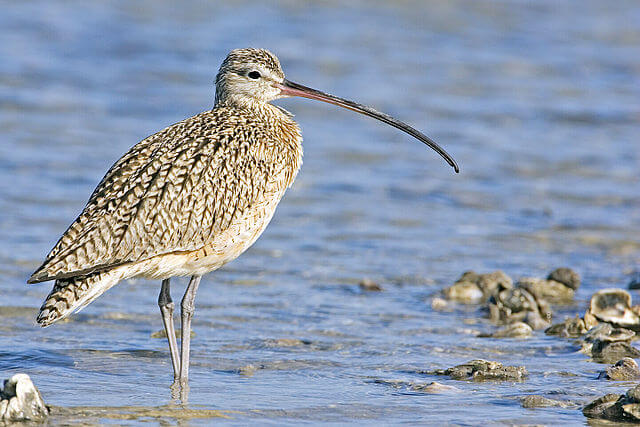
There is a “a flicker of hope” for one of Northern Ireland’s most endangered birds, the curlew, as conservationists report a promising breeding season.
Once widespread in Northern Ireland, the curlew has suffered an alarming 82% decline since 1987.
However, recent efforts in the Antrim Hills, including the implementation of protective measures such as electric fencing around ground-level nesting sites, led to the successful fledging of 55 chicks.
In County Fermanagh, 43 breeding pairs were documented around the RSPB’s Lower Lough Erne nature reserve and affiliated lands.
The decline in curlew numbers is attributed to factors like habitat loss, low breeding productivity, and predation.
With just 150 breeding pairs remaining in Northern Ireland, the species faced imminent extinction without intervention.
The RSPB, through the EU-funded “Curlews in Crisis” project, collaborated with farmers and landowners, monitoring 8,000 hectares in the Antrim Hills.
The efforts yielded positive results, with nearly 40 pairs of curlew detected and 30 nests built. Electrified fences contributed to an impressive 96% hatching success rate.
RSPB NI’s Conservation Officer, Katie Gibb, expressed delight at the outcome.
“With 55 chicks fledging this year and the return of juvenile birds from previous years, there is a flicker of hope for species recovery for Curlew in Northern Ireland,” she said.
“Within the first three years of the project, in conjunction with DAERA’s Environmental Farming Scheme (EFS) group option which supports farmers to help curlew on their land, we have managed to get a total of 152 chicks fledged.”
The reserve at Lower Lough Erne now boasts the highest breeding curlew density in Ireland, with 43 pairs across 200 hectares of lowland wet grassland.
Estate manager Amy Burns said it was “an amazing achievement” and a “big increase” from the 36 pairs recorded last year.
——————————————————————————
At Natural World Fund, we are passionate about stopping the decline in our wildlife.
The decline in our wildlife is shocking and frightening. Without much more support, many of the animals we know and love will continue in their decline towards extinction.
When you help to restore a patch of degraded land through rewilding to forests, meadows, or wetlands, you have a massive impact on the biodiversity at a local level. You give animals a home and food that they otherwise would not have had, and it has a positive snowball effect on the food chain.
We are convinced that this is much better for the UK than growing lots of fast-growing coniferous trees, solely to remove carbon, that don’t actually help our animals to thrive.
This is why we stand for restoring nature in the UK through responsible rewilding. For us, it is the right thing to do. Let’s do what’s right for nature!
Donate today at https://naturalworldfund.com/ and join in the solution!

